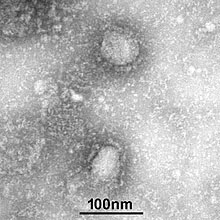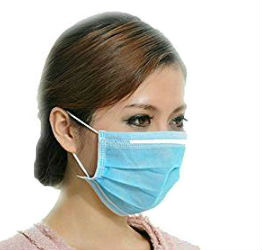Outbreak of Coronavirus COVID-19 from Wuhan
Are you concerned about contracting coronavirus COVID-19 ?

The news about a novel coronavirus named COVID-19 that appeared in Wuhan, China and has been spreading may be causing you to be concerned.
Please do NOT panic. "Stay Calm and Carry On".
Read our PANDEMIC PLAN for you.
COVID-19 has been declared a global pandemic by WHO. Most of you will not be getting very sick from this virus and will not die from this infection. However, it appears that the most vulnerable are seniors, and those with low immune systems.
If you are concerned that you may be sick from coronavirus (you may have travelled recently, or you have come in contact with someone who travelled), please contact us first by telephone (416.508.5691) or online CHAT before you come in to the clinic to be assessed. This will help us screen whether you are at risk, and help us prepare to protect you, ourselves, and other patients before you come.
|
Please Contact Us first BEFORE you come to the clinic, IF you have ANY of the following SCREENING: 1. You have a cough or have trouble breathing. AND 2. You have a fever (37.5 C or higher) or you feel hot/cold chills like you are having a fever. IF you are already severely ill with a respiratory illness (fever, cough, trouble breathing, weakness), please call 911 instead and go to the Emergency Department. Let them know you may have coronavirus if you have been travelling. |
When you arrive at our clinic:
- If you fit the screening criteria above, please stay in your car and call our office to let us you have arrived.
- Please use the alcohol hand sanitizer and clean your hands. (This will help reduce the risk of transmission.)
- Please use a surgical mask to cover your mouth. (This will prevent any droplets from your cough from spreading.)
- We will meet you and assess you through your car window in our parking lot.
Are you still thinking about the coronavirus...?
Please do not panic about the news you may be hearing. The heightened measures implemented by health authorities are a safety precaution. With any public health outbreak, a step-wise approach is usually taken for the public when implementing public health advisories and orders. Ultimately, some sort of quarantine is the go-to response for any outbreak, as it stops the spread of infection. Although quarantine is effective, a mass quarantine policy can have the side effect of causing unnecessary anxiety and fear. Although you may see scary pictures of health providers in masks, isolation gowns, gloves, this is something that health care providers have routinely put on to treat any respiratory illness that comes to a hospital (droplet or airborne precautions) in the hospitals. We have been donning these to treat patients for the past decade since we learned about preventing infections from the 2002-2003 SARS-CoV outbreak. Better safe than sorry.
Recent data modelling and surveillance testing, has suggested that many people are already infected with the coronavirus. Many may only have been mildly sick (and therefore not reported in calculations.) Currently, it appears that the reported mortality rate for COVID-19 (roughly 2-3%) is much lower than SARS-CoV (15%) or MERS-CoV (35%). The coronavirus is more contagious (capable of infecting roughly 2 people from each sick person) than the annual flu (infectability ranges from 1.5-2), but is much less contagious than chicken pox (which each sick person can infect 9-10 others) or the measles (which each sick person can infect 12-18 people). We have vaccines to protect against chicken pox (VZ) and measles (MMR). The coronavirus is likely only a droplet-type infection, rather than the more dangerous airborne types like measles and tuberculosis.
As it spreads worldwide, you will be hearing from public health about what kind of precautions and procedures you will need to do. Please pay attention.
Our public health authorities, hospitals, and doctor's offices are prepared for this type of outbreak. New policies and procedures have been developed and implemented ever since the SARS (Severe Acute Respiratory Syndrome) outbreak in 2002-2003. Toronto was a major centre that was affected by this and so we have learned alot and have prepared for similar infections. Transparency, cooperation, research and information sharing, and coordinated efforts are key to containing outbreaks in our global connected world. Case identification, contact tracing, quarantine, and screening are typical tools used. Health care providers have been trained and are using contact and droplet precautions (wearing personal protective equipment like gloves, face protection, isolation gowns, N95 masks).
What is your best protection from coronavirus?
- Wash your hands with soap and water.
- Use alcohol based hand sanitizers when outside in public.
- If you cough or sneeze, please cough or sneeze into your arm (cover your mouth and nose with your elbow) when you are not wearing a surgical mask.
- Avoid travelling to known outbreak areas.
- Pay attention to the local public health advisories and follow them. If public health has ordered you to self-quarantine for 14 days, please stay home for 14 days.
Do I need to wear a mask?
 Masks that cover the mouth and nose are more visible in the public during outbreaks. Some are made from fashionable fabrics. However, unless you are sick or potentially infected, these masks do not really do anything except help you and others feel safer. During this time of community spread of COVID-19 and lack of surveillance testing, we recommend everyone wear a home-made mask of some sort to prevent the spread of the virus (you may be pre-symptomatic infected) when you are outside your home. If you come to the clinic, you must bring your own mask and wear it to enter the clinic.
Masks that cover the mouth and nose are more visible in the public during outbreaks. Some are made from fashionable fabrics. However, unless you are sick or potentially infected, these masks do not really do anything except help you and others feel safer. During this time of community spread of COVID-19 and lack of surveillance testing, we recommend everyone wear a home-made mask of some sort to prevent the spread of the virus (you may be pre-symptomatic infected) when you are outside your home. If you come to the clinic, you must bring your own mask and wear it to enter the clinic.
If you are coughing and sick, please DO wear some sort of loose fitting mask (like the ear-loop surgical masks). This will help catch all your cough and sneeze droplets in to the mask and prevent it from spreading in the air and dropping on surfaces that may infect other people. Change your masks if they get wet.
Please do NOT wear an N95 mask unless you are a health care provider treating a suspected febrile respiratory illness patient in close proximity. N95 masks have to be fitted for each wearer, since it creates a tight seal around the face. It is hard to breath with an N95 mask on, and if you are sick and coughing, you might get lightheaded and panic if you feel you can't breath. Wear a regular ear-loop surgical mask instead.
References:
https://www.cdc.gov/coronavirus/index.html
https://www.who.int/emergencies/diseases/novel-coronavirus-2019
https://www.nytimes.com/interactive/2020/world/asia/china-coronavirus-contain.html